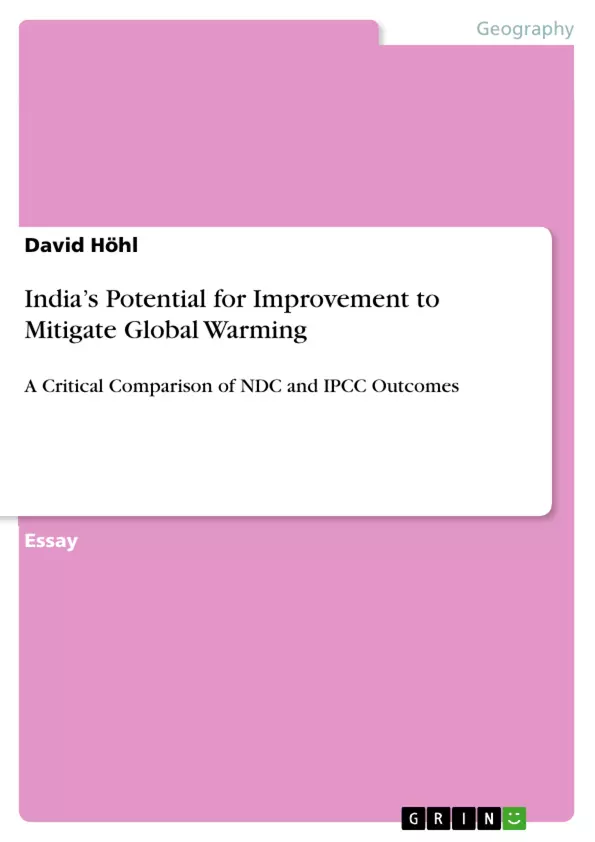India faces a dilemma. Its prime minister promised access to electricity, education and health to all citizens. Meanwhile, it aims in its Nationally Determined Contribution (NDC) for a low carbon economy. The president of one of Asia’s most influential think tanks concludes if India doesn’t achieve the "Indian dream" in a climate friendly way, it will either destroy India or the planet. Since it is the most highly populated country in the world (17 % of the whole world population lives in India), the way it tackles climate change has a crucial impact globally.
To assess policy options, it is substantial to see to which scenarios policies lead to. Integrated assessment models provide these future scenarios by combining knowledge from a variety of disciplines.
Inhaltsverzeichnis (Table of Contents)
- Introduction
- The AIM and the SSP1
- Review and Comparison of IPCC and NDC Outcomes
- Discussion of NDC Policies and Policy Advice
- Conclusion
Zielsetzung und Themenschwerpunkte (Objectives and Key Themes)
This paper explores India's potential to mitigate global warming by critically comparing the outcomes of its Nationally Determined Contribution (NDC) with those of the Intergovernmental Panel on Climate Change (IPCC). The analysis focuses on India's ambitious goals for economic development and its commitment to a low-carbon future, highlighting the complex challenges and opportunities faced by the country.
- India's ambition for economic development and climate action.
- The role of the Nationally Determined Contribution (NDC) in achieving India's climate goals.
- Comparison of IPCC and NDC outcomes for India's climate change mitigation.
- Analysis of policy options and advice for achieving a low-carbon future in India.
- The global impact of India's actions on climate change.
Zusammenfassung der Kapitel (Chapter Summaries)
- Introduction: This chapter introduces the central dilemma facing India, balancing its ambition for economic development with its commitment to a low-carbon future. It highlights the global significance of India's approach to climate change due to its large population.
- The AIM and the SSP1: This chapter discusses the use of integrated assessment models, specifically the Asia-Pacific Integrated Model (AIM), to evaluate policy options and scenarios for climate change mitigation. It focuses on the SSP1 scenario, "Taking the Green Road," which prioritizes sustainability and human well-being over economic growth.
Schlüsselwörter (Keywords)
The key terms and concepts explored in this paper include India's Nationally Determined Contribution (NDC), climate change mitigation, the Intergovernmental Panel on Climate Change (IPCC), the Asia-Pacific Integrated Model (AIM), socioeconomic pathways (SSP), sustainable development, and global warming.
- Citar trabajo
- David Höhl (Autor), 2019, India’s Potential for Improvement to Mitigate Global Warming, Múnich, GRIN Verlag, https://www.grin.com/document/465439



